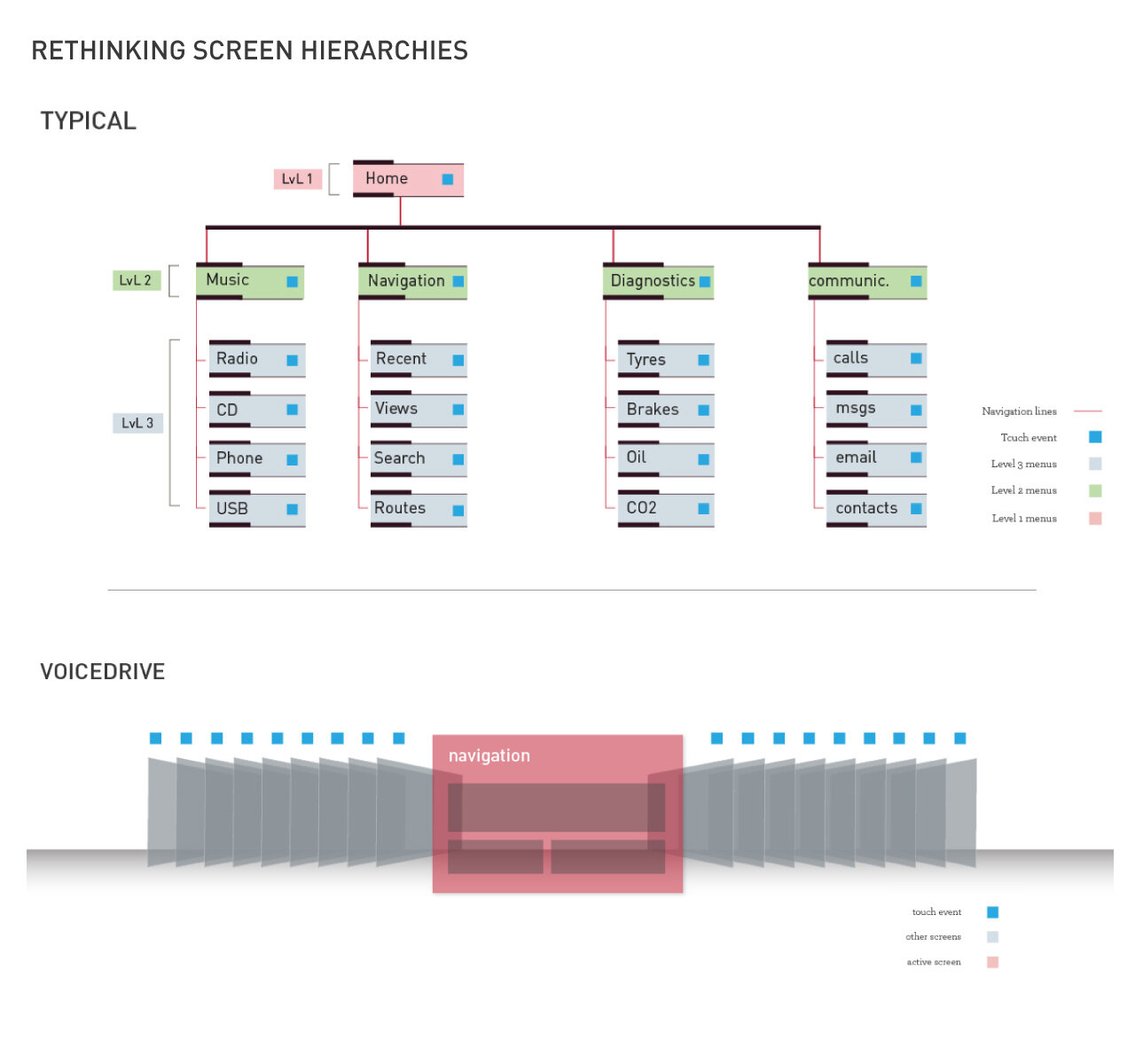
VoiceDrive
Exploring Speech Recognition in Automotive HMI
VoiceDrive
Automatic speech recognition
in Automotive HMI
2012
12 weeks

VoiceDrive is an automotive infotainment system concept which explores interactions with Natural Language Processing, and Speech Recognition. VoiceDrive proposes an alternate open ecosystem in embedded automotive HMI design, to co-create applications accessing some of the 150+ sensors on board.
Context
VoiceDrive was designed at Tata Elxsi, as my undergraduate thesis. Over the past decade, road crashes have become the 10th leading cause of death in the world, and is predicted to rise to the fifth position by 2030. India is the number one contributor to global road crash mortality and morbidity figures.
Research was carried out to outline the advantages and drawbacks of Speech Recognition, how it could be implemented in the automotive environment and its future in the domain. The research also investigates the possibilities of reducing dependency on a visual interface while driving.

Interaction
Distracted driving is a major cause of road accidents. VoiceDrive uses a what-you-say-is-what-you-get approach to take the cognitive load away from the driver. By keeping driver’s hands on the wheel and eyes on the road, the driver interacts with VoiceDrive with no physical “balancing acts”. VoiceDrive was designed to be interacted with by the driver and all passengers in the car. Buttons and microphones were strategically placed to activate the system in easily.
Screen Hierarchy
The Screens themselves were present to aid with the learning curve of features available, and after the first 4-5 uses, the dependency on them reduced. The possibility of voice and speech interactions, allowed me to visualise the hierarchy of screens differently, and the navigation afforded a novel flat structure, allowing people to cut through the extraneous menus and bring up information by just vocalising what was required.

My undergraduate thesis can be found here.
